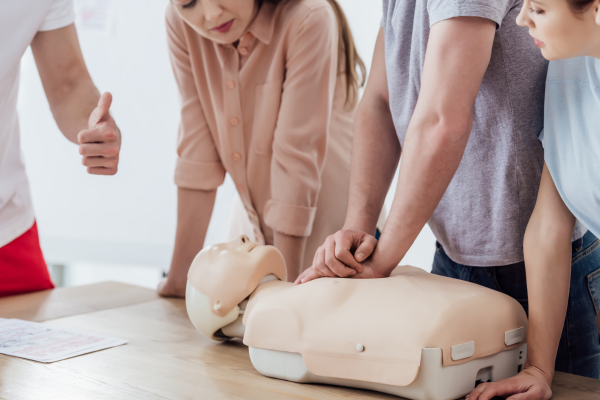First Aid Training: A Guide
Accidents and emergencies can happen at any time, regardless of your workplace. Having someone with first aid training can make all the difference. But what type of training can you actually take, if you want to learn first aid?
In today’s blog, we’ll break down the three key courses we offer at CST Training.

Why First Aid Training is Essential
The importance of first aid extends far beyond workplace compliance. In many cases, it’s the critical first response that saves lives.
Workplaces are required under health and safety regulations to ensure employees receive adequate first aid provision. But even outside work, these skills are invaluable. Knowing how to respond calmly and effectively in a crisis helps reduce panic, prevent injuries from worsening, and promote faster recovery.
First aid training also helps to build safer, more confident communities- ensuring that whether at home, work, or in public, there’s always someone nearby who can help.
What to Expect During First Aid Training
During first aid courses, participants learn both the theory and practical application of life-saving techniques. Courses are highly interactive.
Typical subjects covered include:
- CPR and use of an AED
- Treating choking, burns, cuts, and fractures
- Managing shock and unconscious casualties
- Recognising and responding to heart attacks and strokes
- Handling workplace injuries and incidents
- Providing basic life support until medical assistance arrives
Types of First Aid Training Available
There are several different types of first aid training, each designed to suit specific needs and levels of responsibility. The most common courses include:
- Level 3 Award in First Aid at Work (FAW): A comprehensive three-day course ideal for high-risk workplaces such as construction, manufacturing, or logistics.
- Level 3 Award in Emergency First Aid at Work (EFAW): A one-day course perfect for low-risk environments like offices or shops.
- Level 2 Award in Introduction to First Aid for Mental Health: A short online course designed to help participants recognise mental health issues.

The Benefits of First Aid Training for Individuals and Organisations
First aid training has long-term benefits for everyone involved. For individuals, it builds confidence and leadership in stressful situations. It also helps develop communication, decision-making, and problem-solving skills that are valuable in any profession.
For organisations, first aid demonstrates a strong commitment to health and safety. It can reduce accident severity, minimise downtime, and ensure legal compliance. Many businesses also find that trained staff foster a culture of care and responsibility, improving morale across the workforce.
Additionally, having trained first aiders on-site can improve a company’s reputation with clients, regulators, and employees alike- proving that safety does comes first.
Conclusion
First aid is one of the most valuable investments an individual or organisation can make. It not only saves lives but also builds a safer, more prepared environment where everyone feels protected and supported.
Whether you’re looking to meet workplace regulations, advance your personal skill set, or simply gain the peace of mind that comes with being able to help others, completing an accredited first aid course is a vital step.

If you still have any questions regarding the courses, then do not hesitate to get in touch.
Phone – 020 3488 4472





